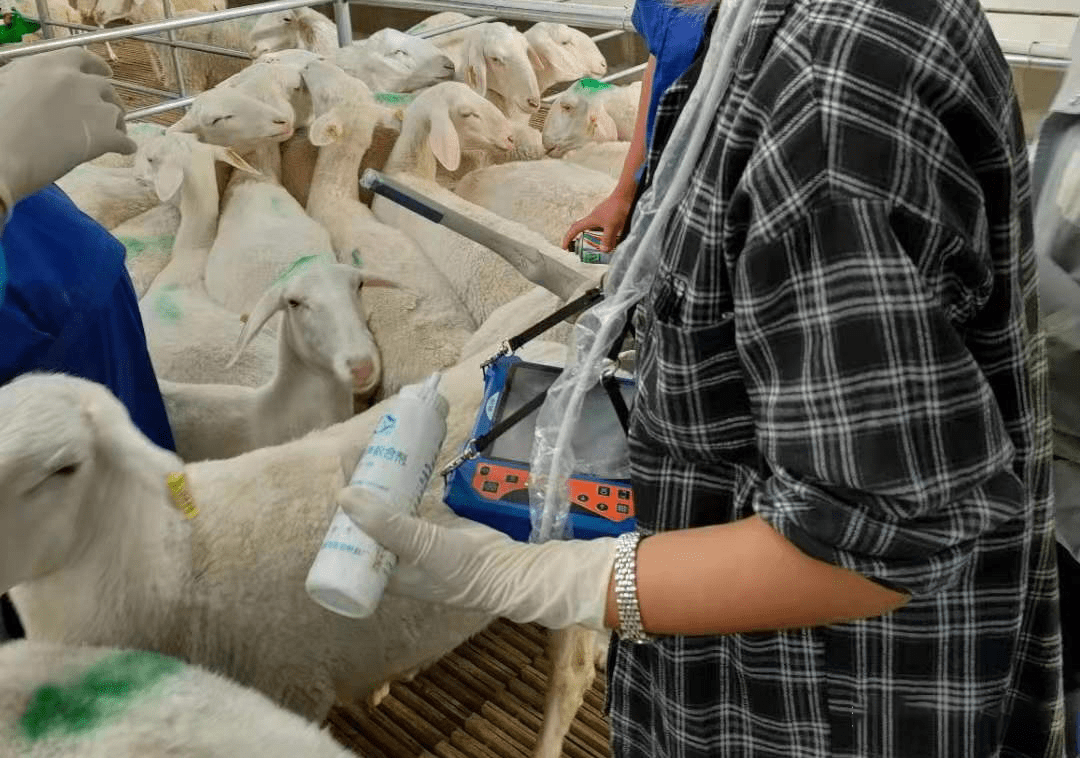The feeding and management of breeding rams, as well as their mating ability, depend on their robust physique, abundant energy, and strong sexual desire. Therefore, it is necessary to ensure sufficient supply of protein, vitamins, and minerals, maintain moderate fat condition of the breeding ram, and measure the backfat thickness of the breeding ram using B-ultrasound before mating to see if it is suitable for breeding. In the first 30 days of mating, gradually supplement with concentrated feed such as corn, soybean cake, wheat bran, bone meal, etc., supplement with 0.5 kg per day, 1.5 kg of green and juicy feed such as melons, 2 eggs, and sufficient clean and hygienic drinking water. Rams should be grazed separately during non mating seasons. Before mating, it is necessary to use sheep ultrasound to conduct a comprehensive examination of the reproductive organs of the breeding ram.

Ewes require supplementary feeding in addition to grazing, especially during mating season, pregnancy, and lactation. Refined feed is rich in protein and balanced with minerals and vitamins. The formula is as follows: hay powder 50%, corn powder 22%, wheat bran 8%, cooked soybean powder 6%, bran cake 12%, shell powder 1.5%, salt 0.5%. After 30 days of mating, ewes are given short-term optimal feeding, supplemented with 0.25kg of concentrated feed and 0.5 kg of juicy feed such as potatoes, melons, and vegetables per day. During late pregnancy and lactation, supplement with 0.45 kg of concentrated feed, 1.5 kg of hay, and 1.5 kg of silage feed per day. In places with good conditions, straw can be ammoniated or stored for feeding to sheep. The feeding principle is to prioritize the second best, feed before grazing, grass after returning to grazing, feed trough and grass rack, add less frequently, and drink clean and hygienic well water. Feed should be fresh, clean, and free from mold and decay. Control sheep grazing in spring to prevent "running green"; Grazing against the wind, grazing with the wind, and providing appropriate supplementary feeding before grazing; Early grazing and late returning grazing in summer, taking a break at noon to prevent heatstroke; Grazing in autumn and winter, returning to grazing later, grazing later on frosty days, returning to grazing later, and not grazing in snowy days. Pregnant ewes are grazed on site during their due period. It is strictly prohibited to whip heavy pregnant ewes during grazing to cause them to be frightened. Avoid crossing ditches, fences, and running wildly to prevent miscarriage. Use sheep to check the placenta with B-ultrasound to see if there are any abnormalities and prevent miscarriage. When pregnant sheep have signs of miscarriage, progesterone 0.18-0.20g should be administered intramuscularly once a day for 4 consecutive days.
The role of sheep ultrasound in artificial insemination of breeding sheep
Reasonable utilization of breeding rams: One month before mating, breeding rams are trained to collect semen, eliminate aged semen in their bodies, and enhance their sperm production ability. Regularly use sheep ultrasound to check the testicular condition of male sheep. Generally, male sheep are limited to one sperm collection per day. If they are collected twice a day (with an interval of more than 30 minutes between each collection), they should be collected the next day, with no more than five sperm collections per week. If the frequency is too high, it can cause the body of the ram to weaken, the vitality of the sperm to decrease, and even lead to the phenomenon of not ejaculating. During the semen harvesting period, rams should strengthen their exercise to give them ample physical strength. In addition, excessive medication should not be used during manual semen collection. If there is a disease, sperm collection should be stopped, and instruments (such as sheep ultrasound) should be used for examination and treatment in a timely manner. It can only be used again after its illness has recovered and its physical condition has fully recovered.
The management of the testing ram usually involves wearing a testing cloth or cutting off the vas deferens. The testing ram itself is strong, has a strong sexual desire, and is disease-free. It is best to raise them separately during the trial season. Put the ewes into the ewe group for a 0.5h test in the morning and evening, select the estrus ewes, and use BCF imported ewes for B-ultrasound observation, and timely insemination. The test cloth needs to be cleaned for the management of ewes.
Before the mating season arrives, timely weaning of lambs, grouping of ewes, vaccination, and deworming should be done, and short-term optimal feeding should be carried out to ensure that the ewes have a medium or above fat condition. After using sheep to measure with B-ultrasound, this can increase ovulation, release high-quality eggs, improve conception rate and concentrated estrus rate. After entering the estrus season, it is recommended that ewes do not undergo fertilization during the first estrus period. Practice has shown that fertilization during the second and third estrus periods has a higher conception rate than during the first estrus period.
tags: sheep ultrasoundultrasoundB-ultrasound


